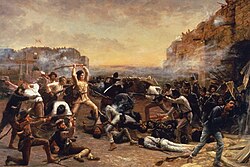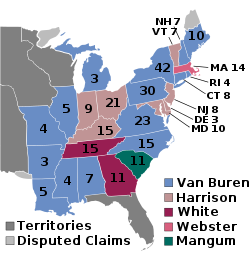This article needs additional citations for verification .(May 2013) |
| |||||
| Decades: | |||||
|---|---|---|---|---|---|
| See also: | |||||
| 1836 in the United States |
| 1836 in U.S. states |
|---|
| States |
| Washington, D.C. |
| List of years in the United States by state or territory |
Events from the year 1836 in the United States. Exceptionally, this page covers not only the history of the United States, but also that of the Republic of Texas in 1836.



